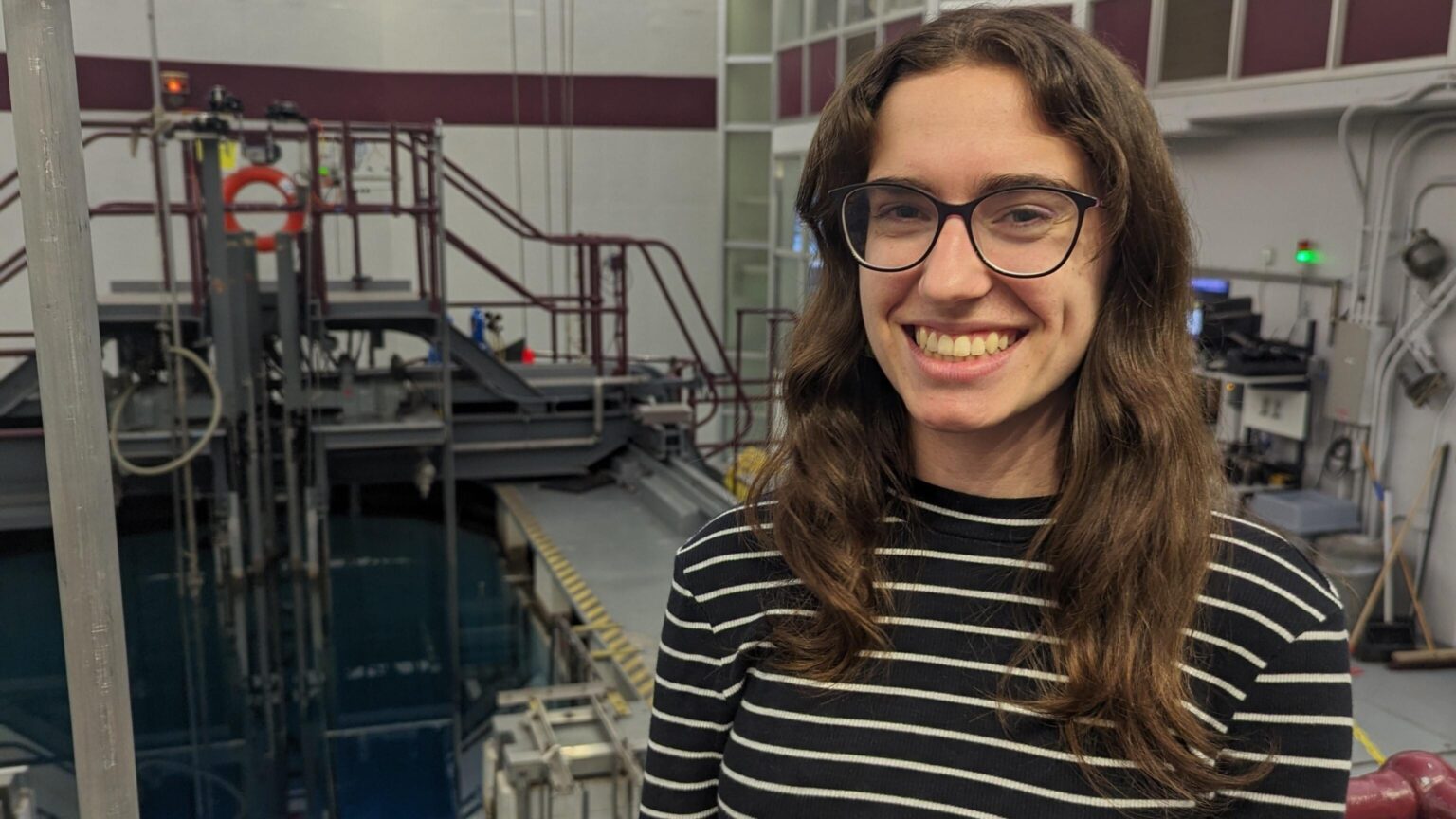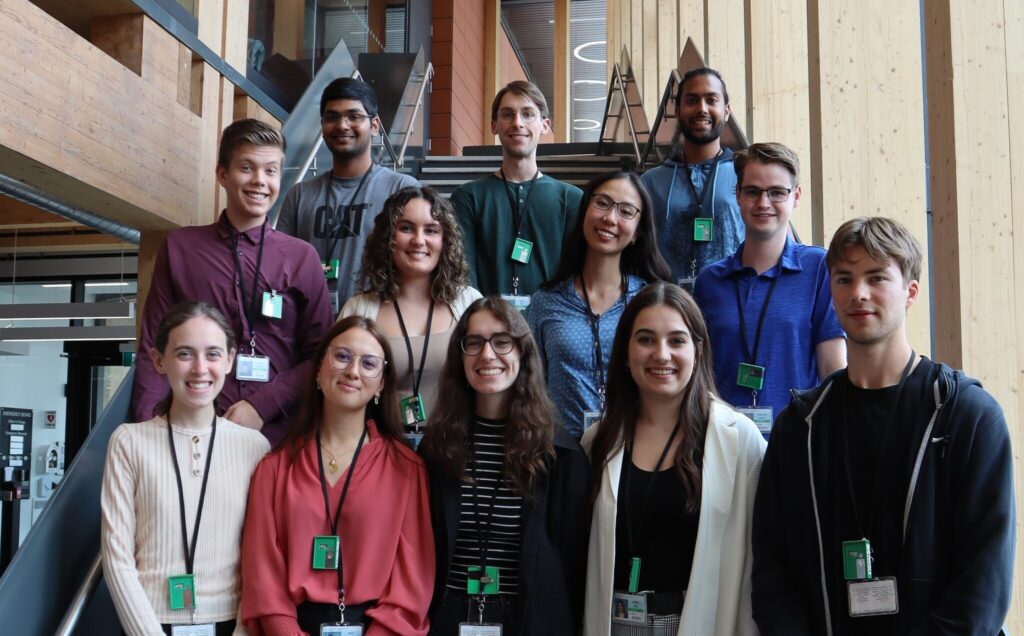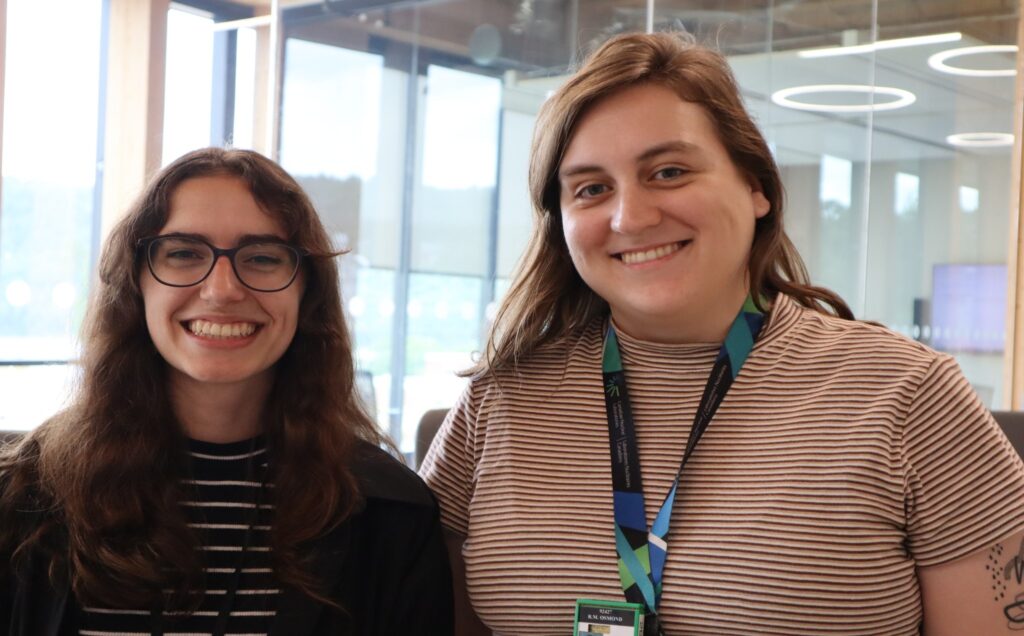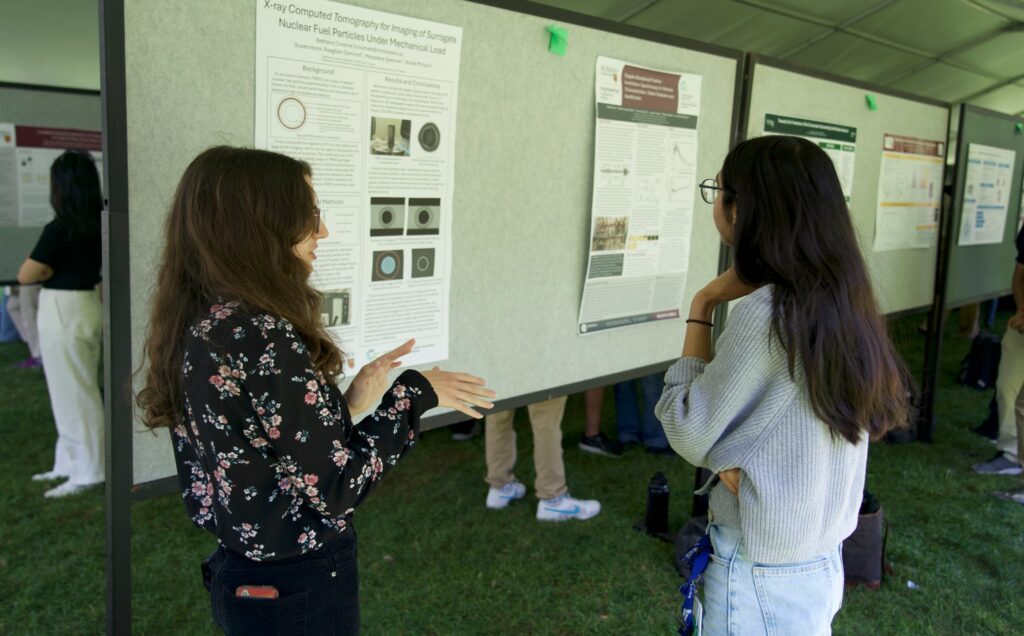
Beth Croome is a third-year Mechanical Engineering and Society student at McMaster University. She has spent the past four months working as a research assistant in the Department of Materials Science & Engineering, supported through the Canadian Nuclear Laboratories Undergraduate Summer Research Experience. Learn about Beth’s experience in her own words.
This summer, I got the chance to interact with a variety of research scientists, lab technicians and fellow summer student researchers, all of whom are contributing to advancing scientific knowledge and engineering capabilities in one way or another.
For the past four months I have been working as a research assistant, primarily stationed at the Canadian Centre for Electron Microscopy (CCEM) which is located in the basement of the AN Bourns Science Building on McMaster’s main campus.
The CCEM is home to state-of-the-art instruments and top-notch researchers specializing in all types of cutting-edge microscopy techniques. One such imaging technique is called X-ray computed tomography (XCT), which is the materials science equivalent to a medical CT scanner. It uses X-rays to capture 2-dimensional images of a sample as it rotates 360°, then reconstructs those images into a 3-dimensional model, which can be further analyzed. XCT is a non-destructive technique and can provide high quality image resolution down to a few thousandths of a millimeter.
My project this summer was focused on using X-ray computed tomography to examine the microstructure of proxy (meaning, with no actual uranium provided) nuclear fuel.
Visiting the Canadian Nuclear Laboratories (CNL)

Joining 11 other undergraduate student researchers from McMaster, I had the amazing opportunity to visit the Canadian Nuclear Laboratories located in Chalk River, Ontario for two weeks in July. We spent every morning working with CNL mentors, which for me meant working in their XCT lab, and each afternoon getting tours and lectures about all the work that gets done at CNL. After hours, we had our evenings free to explore all the beautiful sites that nearby Petawawa and Deep River had to offer.

Working at CNL, I saw many different stages of research process at the industry level. From sitting in on meetings discussing plans and funding, to watching experiments in progress, and learning firsthand just how data gets processed and transformed into actual results, I was exposed to a broad range of learnings about the nuclear industry. Often, all I could do was marvel at how much logistics and planning went into both daily and long-term operations at a facility like CNL. I can’t think of many other places which are home to both nuclear reactors and a Tim Hortons (I think they took the whole ‘Canadian’ Nuclear Laboratories thing to heart).
CNL has come a long way since its establishment as a nuclear research facility in the 1940s—though many of the buildings from that era remain standing to this day, a physical reminder of the site’s impressive history. It was an incredible place for forming interdisciplinary connections, given that their interests span from space exploration to cancer treatments to advanced reactor fuel.
Although I learned a lot during our visit, I also (expectedly) learned a lot more about just how much I don’t know. Two weeks was a very short amount of time to absorb almost 80 years’ worth of scientific history—not to mention all the ongoing work that researchers continue to this day!
The most valuable memories I will take away from this summer have come from getting to know all the incredible people at the CCEM and CNL. I’ve met so many people who are passionate about their work, and incredibly welcoming and generous with their time. It’s given me a much greater appreciation for the fact that while ‘nuclear research scientist’ may seem incredibly intimidating on paper, there is in fact a human being behind the job title. This being my first practical experience with engineering research, I had little understanding of just what I was getting myself into, but I didn’t need to worry, as there was always somebody around who could help me out or point me in the right direction.
Sharing the knowledge
A large part of my learning this summer has come through opportunities to share and present my work with others at events like McMaster’s Annual Summer Research Poster Showcase. Throughout the process of designing, creating and presenting a poster which summarized the work I’ve done this summer, I’ve gained an appreciation for just how much labour goes into knowing how to explain ideas effectively. The poster showcase was an amazing opportunity to interact with many other undergraduate summer researchers across disciplines of science and engineering. It was a highlight of my summer to get to see a gathering of my peers and friends, all of whom have worked so hard to become experts on their own niche projects over the past few months.

I’ll never forget my experiences as a research assistant this summer. I entered this summer having only a cursory understanding of the nuclear industry in Canada, and I exited with as much of an understanding as four months can teach you, along with a well fueled curiosity to learn even more. Getting to spend some days reading through countless academic papers, and others standing on top of nuclear reactors, has been a summer well spent. I would strongly encourage anyone who gets the opportunity to visit CNL to take it– and to come well prepared with an open mind and plenty of curiosity to guide your way.
